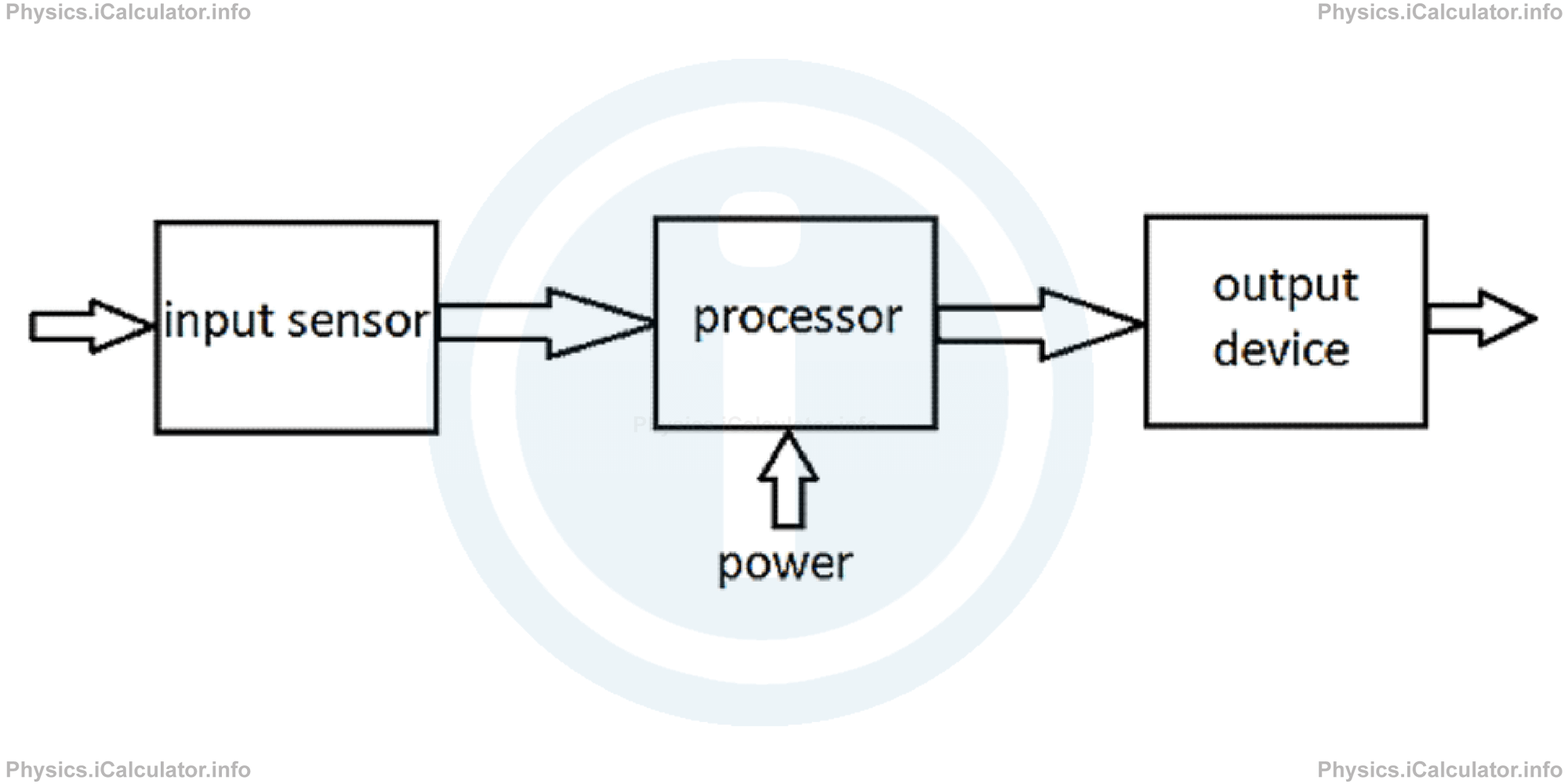Menu
Physics Lesson 17.1.1 - Electronic Circuits
Please provide a rating, it takes seconds and helps us to keep this resource free for all to use
Welcome to our Physics lesson on Electronic Circuits, this is the first lesson of our suite of physics lessons covering the topic of Electronic Essentials: Analogue and Digital Signals, Binary Operations and Logic Gates, you can find links to the other lessons within this tutorial and access additional physics learning resources below this lesson.
Electronic Circuits
An electronic circuit is any circuit containing electronic components such as microchips, capacitors, resistors, diodes, transistors, inductors, coils, transformers etc. Electronic circuits are found in computer-based systems such as PCs, PLCs (programmable logic controllers), TVs, amplifiers, CD players etc.
Most electrical circuit operate at low currents. However, electrical circuits can control very large and powerful circuits through the programs installed in them.
An electronic system works on the base of signals, which are tiny changes in current that occur when the external source oscillates. For example, a sound wave causes the surrounding air to oscillate and as a result, the current in the microphone changes in proportion to the amplitude of sound oscillations. In this way, we obtain oscillating EM signals which when enforced (magnified) are converted again into sound waves in the loudspeaker. In this way, the output sound wave is enforced (magnified) and we therefore hear a stronger (louder) voice.
Obviously, the extra sound power produced does not come from nothing; the power supply brings extra energy to the sound, making it more powerful.
The device used to convert sound waves to EM waves and vice-versa is known as "processor". It is the "brain" of all electronic systems.
Roughly speaking, an electronic system is composed by three main parts: input (sensor), processing unit (processor) and output. Look at the figure:

You have reached the end of Physics lesson 17.1.1 Electronic Circuits. There are 5 lessons in this physics tutorial covering Electronic Essentials: Analogue and Digital Signals, Binary Operations and Logic Gates, you can access all the lessons from this tutorial below.
More Electronic Essentials: Analogue and Digital Signals, Binary Operations and Logic Gates Lessons and Learning Resources
Whats next?
Enjoy the "Electronic Circuits" physics lesson? People who liked the "Electronic Essentials: Analogue and Digital Signals, Binary Operations and Logic Gates lesson found the following resources useful:
- Circuits Feedback. Helps other - Leave a rating for this circuits (see below)
- Electronics Physics tutorial: Electronic Essentials: Analogue and Digital Signals, Binary Operations and Logic Gates. Read the Electronic Essentials: Analogue and Digital Signals, Binary Operations and Logic Gates physics tutorial and build your physics knowledge of Electronics
- Electronics Revision Notes: Electronic Essentials: Analogue and Digital Signals, Binary Operations and Logic Gates. Print the notes so you can revise the key points covered in the physics tutorial for Electronic Essentials: Analogue and Digital Signals, Binary Operations and Logic Gates
- Electronics Practice Questions: Electronic Essentials: Analogue and Digital Signals, Binary Operations and Logic Gates. Test and improve your knowledge of Electronic Essentials: Analogue and Digital Signals, Binary Operations and Logic Gates with example questins and answers
- Check your calculations for Electronics questions with our excellent Electronics calculators which contain full equations and calculations clearly displayed line by line. See the Electronics Calculators by iCalculator™ below.
- Continuing learning electronics - read our next physics tutorial: Electronic Components and Switching
Help others Learning Physics just like you
Please provide a rating, it takes seconds and helps us to keep this resource free for all to use
We hope you found this Physics lesson "Electronic Essentials: Analogue and Digital Signals, Binary Operations and Logic Gates" useful. If you did it would be great if you could spare the time to rate this physics lesson (simply click on the number of stars that match your assessment of this physics learning aide) and/or share on social media, this helps us identify popular tutorials and calculators and expand our free learning resources to support our users around the world have free access to expand their knowledge of physics and other disciplines.